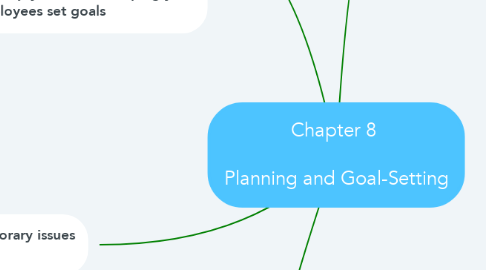
1. 8.2 Classify the types of goals organizations might have and the plans they use.
1.1. Type of goals -Strategic/financial -Stated/real
1.2. Plan -Strategic/Operational -Long-term/short-term -Specific/directional -Single-use/standing
1.2.1. chapter 8 slide no 8
2. 8.3 Compare and contrast approaches to goal-setting and planning. Know how to set goals personally and create a useful, functional to-do list Develop your skill at helping your employees set goals
2.1. Traditional goal-setting and MBO
2.1.1. Traditional -Top managers set goals and flow down through organization -Subgoals for each organizational area.
2.1.2. https://www.youtube.com/watch?v=5S4qhA1fweg
2.2. Six characteristics of well-written goals
2.2.1. -Written in terms of outcomes rather than actions -Measurable and quantifiable -Clear as to a time frame -Challenging yet attainable -Written down -Communicated to all necessary organizational members
2.2.1.1. S -specific M-measurable A-attainable R-Relevant T-Time frame
2.3. Five steps of goal-setting
2.3.1. 1.Review mission 2.Evaluate resources 3.Determine goal 4.Note down and communicate 5.Review result and goal
2.4. Contingency factors
2.4.1. -Organizational level -Degree of environmental uncertainty -Length of future commitments
